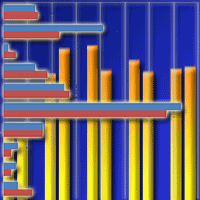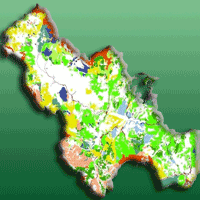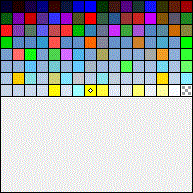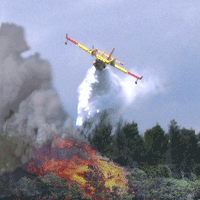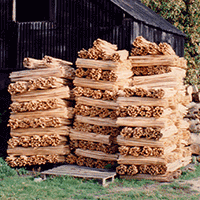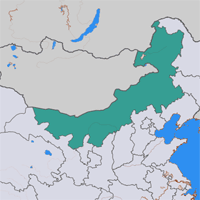
Public attitudes towards the use of transgenic forest trees: a cross-country pilot survey
Vassiliki Kazana (1) , Lambros Tsourgiannis (2), Valasia Iakovoglou (1), Christos Stamatiou (1), Alexander Alexandrov (3), Susana Araújo (4), Sasa Bogdan (5), Gregor Bozic (6), Robert Brus (7), Gerd Bossinger (8), Anastasia Boutsimea (1), Nevenka Celepirović (9), Helena Cvrčková (10), Matthias Fladung (11), Mladen Ivankovic (9), Angelos Kazaklis (1), Paraskevi Koutsona (1), Zlata Luthar (12), Pavliná Máchová (10), Jana Malá (10), Kostlend Mara (13), Milan Mataruga (14), Jana Moravcikova (15), Donatella Paffetti (16-22), Jorge AP Paiva (17), Dimitiros Raptis (1), Conchi Sanchez (18), Sandra Sharry (19), Terezia Salaj (15), Mirjana Šijačić-Nikolić (20), Noemi Tel-Zur (21), Ivaylo Tsvetkov (3), Cristina Vettori (22), Nieves Vidal (18)
iForest - Biogeosciences and Forestry, Volume 9, Issue 2, Pages 344-353 (2015)
doi: https://doi.org/10.3832/ifor1441-008
Published: Nov 20, 2015 - Copyright © 2015 SISEF
Research Articles
Collection/Special Issue: COST Action FP0905
Biosafety of forest transgenic trees and EU policy directives
Guest Editors: Cristina Vettori, Matthias Fladung
Abstract
Information on public attitudes towards the use of transgenic trees in forest plantations is important in the decision-making process and policy implementation for safe tree development, particularly at the EU level. In Europe, the use of transgenic forest trees is very limited and therefore such information is completely lacking. To address this issue within the FP0905 European COST Action on the Biosafety of Transgenic Forest Trees a pioneer cross-country pilot survey on public attitudes towards the use of transgenic forest trees was conducted using young population as a focus group. This was decided mainly because this focus group represents the future consumers, policy makers or developers. Specifically, the survey aimed to: i) assess the level of young people’s knowledge about transgenic forest trees, ii) identify issues of concern to them regarding the cultivation of transgenic forest trees and iii) explore whether they approve or disapprove of the use of transgenic forest trees in plantations. Purposive sampling was performed and university students of different disciplines were included in the research as sampling subjects. In total, 1868 completed questionnaires from 15 European and non-European countries were analyzed. The young educated people that took part in the survey appeared to approve of the use of transgenic forest trees in plantations and would be willing to buy forest transgenic products. The potential loss of biodiversity due to a risk of gene flow between transgenic and wild trees was seen as the safety issue of most concern when considering the commercial release of transgenic forest trees. However, a serious perceived lack of knowledge about potential benefits and risks of the cultivation of transgenic forest trees was recorded in most of the countries. K-means clustering was implemented on respondents’ positive responses to identify potential country patterns. No differences in patterns of public attitude towards the acceptance of the commercial growing of transgenic forest trees were observed between European and non-European countries. Extended research on public attitude issues towards the use of transgenic forest trees is strongly recommended as a basis for policy implementation on safe tree development.
Keywords
GM Forest Trees, Public Awareness, Public Acceptance, k-means Clustering, University Students
Authors’ Info
Authors’ address
Valasia Iakovoglou
Christos Stamatiou
Anastasia Boutsimea
Angelos Kazaklis
Paraskevi Koutsona
Dimitiros Raptis
Eastern Macedonia and Thrace Institute of Technology, Department of Forestry & Natural Environment Management, 1st km Drama-Mikrohori, 66100 Drama (Greece)
Ivaylo Tsvetkov
Bulgarian Academy of Sciences, Forest Research Institute, Kliment Ohridski Blvd. 132, Sofia 1756 (Bulgaria)
Instituto de Tecnologia Química e Biológica, Universidade Nova de Lisboa, Av. da República, 2780-157 Oeiras, Portugal & Instituto de Investigação Científica Tropical (IICT), Biotrop, Rua da Junqueira, 30, 1349-007 Lisboa (Portugal)
University of Zagreb, Faculty of Forestry, Department of Forest, Genetics, Dendrology and Botany,Svetošimunska 25, 10 000 Zagreb (Croatia)
Slovenian Forestry Institute, Vecna 2, SI-1000 Ljubljana (Slovenia)
Department of Forestry and Renewable Forest Resources, Biotechnical Faculty, University of Ljubljana, Vecna pot 83, SI-1000 Ljubljana (Slovenia)
The University of Melbourne, Department of Forest and Ecosystem Science, Creswick, Victoria 3363 (Australia)
Mladen Ivankovic
Croatian Forest Research Institute, Laboratory of molecular-genetic testing, Division of genetics, forest tree breeding and seed science, Cvjetno naselje 41, 10450 Jastrebarsko (Croatia)
Pavliná Máchová
Jana Malá
Forest and Game Management Research Institute, Strnady 136, 25202 Jílovište (Czech Republic)
Thünen Institute of Forest Genetics, D-22927 Grosshansdorf (Germany)
Agronomy Department, Biotechnical Faculty, University of Ljubljana, Jamnikarjeva 101, SI-1000 Ljubljana (Slovenia)
Agricultural University of Tirana (Albania)
University of Banja Luka (Bosnia and Herzegovina)
Terezia Salaj
Institute of Plant Genetics and Biotechnology, Slovak Academy of Sciences, Akademicka 2, PO Box 39A, 95007 Nitra (Slovakia)
Department of Agriculture, Food and Environmental Science, Agricultural Genetics Section, University of Florence, P. le delle Cascine 28, 50144, Florence (Italy)
iBET, Instituto de Biologia Experimental e Tecnológica, Apartado 12, 2780-901 Oeiras, Portugal & Instituto de Investigação Científica Tropical (IICT), Biotrop, Rua da Junqueira, 30, 1349-007 Lisboa (Portugal)
Nieves Vidal
Instituto de Investigaciones Agrobiológicas de Galicia (CSIC), La Coruna (Spain)
Universidad Nacional de la Plata, Facultad de Ciencias Agrarias y Forestales, Av.60 y119-c.C. 31, La Plata (Argentina)
University of Belgrade, Faculty of Forestry (Serbia)
French Associates Institute for Agriculture and Biotechnology of Drylands, The Jacob Blaustein Institutes for Desert Research, Ben-Gurion University of the Negar, Sede-Boqer Campus, 84990 Midreshet Ben-Gurion (Israel)
Cristina Vettori
Institute of Bioscience and Bioresources (IBBR), Division of Florence, v. Madonna del Piano 10, 50019 Sesto Fiorentino, FI (Italy)
Corresponding author
Paper Info
Citation
Kazana V, Tsourgiannis L, Iakovoglou V, Stamatiou C, Alexandrov A, Araújo S, Bogdan S, Bozic G, Brus R, Bossinger G, Boutsimea A, Celepirović N, Cvrčková H, Fladung M, Ivankovic M, Kazaklis A, Koutsona P, Luthar Z, Máchová P, Malá J, Mara K, Mataruga M, Moravcikova J, Paffetti D, Paiva JAP, Raptis D, Sanchez C, Sharry S, Salaj T, Šijačić-Nikolić M, Tel-Zur N, Tsvetkov I, Vettori C, Vidal N (2015). Public attitudes towards the use of transgenic forest trees: a cross-country pilot survey. iForest 9: 344-353. - doi: 10.3832/ifor1441-008
Academic Editor
Cristina Vettori
Paper history
Received: Sep 08, 2014
Accepted: Jul 04, 2015
First online: Nov 20, 2015
Publication Date: Apr 26, 2016
Publication Time: 4.63 months
Copyright Information
© SISEF - The Italian Society of Silviculture and Forest Ecology 2015
Open Access
This article is distributed under the terms of the Creative Commons Attribution-Non Commercial 4.0 International (https://creativecommons.org/licenses/by-nc/4.0/), which permits unrestricted use, distribution, and reproduction in any medium, provided you give appropriate credit to the original author(s) and the source, provide a link to the Creative Commons license, and indicate if changes were made.
Web Metrics
Breakdown by View Type
Article Usage
Total Article Views: 55439
(from publication date up to now)
Breakdown by View Type
HTML Page Views: 45645
Abstract Page Views: 4426
PDF Downloads: 4127
Citation/Reference Downloads: 40
XML Downloads: 1201
Web Metrics
Days since publication: 3695
Overall contacts: 55439
Avg. contacts per week: 105.03
Citation Metrics
Article Citations
Article citations are based on data periodically collected from the Clarivate Web of Science web site
(last update: Mar 2025)
Total number of cites (since 2016): 13
Average cites per year: 1.30
Publication Metrics
by Dimensions ©
Articles citing this article
List of the papers citing this article based on CrossRef Cited-by.
References
Gender effect on awareness and attitude toward genetically modified foods and medicine. Journal of Food, Agriculture and Environment 12 (1): 2-7.
Gscholar
Europeans and biotechnology in 2010 - winds of change? Publications Office of the European Union, Luxembourg, pp. 172.
Gscholar
The potential environmental, cultural and socio-economic impacts of genetically modified trees. UNEP/CBD/SBSTTA/13/INF/6, FAO, Rome, Italy, pp. 17.
Gscholar
Biosafety of genetically modified forest trees (GMTs) -COST Action FP0905 - a common action of European scientists. In: Proceedings of the “2nd International Conference of the IUFRO Working Party 2.09.02”. Mendel lectures & Plenary MLP-3, pp. 13.
Gscholar
Genetically engineered trees for plantation forests: key considerations for environmental risk assessment. Plant Biotechnology Journal 11 (7): 785-798.
CrossRef | Gscholar
Attitudes of the general public towards genetically modified organisms (GMOs): the paradoxical relationship between knowledge and attitudes. In: Proceedings of the “13th International Public Communication of Science and Technology Conference”. Salvador (Brazil) 5-8 May 2014, pp. 11.
Online | Gscholar
Knowledge about and attitudes to GMOs among students from various specializations. Outlook on Agriculture 40 (4): 337-342.
Gscholar

